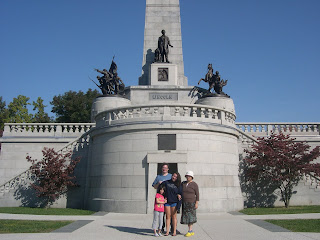In the summer of 1862, President Lincoln had a great deal on his mind. The distant Minnesota frontier probably wasn't a high priority, considering everything else that was going on. Then in August the frontier along the Minnesota River exploded in a spasm of violence known as the Dakota War, or the Dakota Uprising, or the Sioux Uprising. Several bands of eastern Sioux, angered by Indian agent swindles and broken treaty promises, attacked settlers along the Minnesota River, killing as many as 800 before the U.S. army, along with Minnesota volunteers and allied Indians, crushed the uprising in the fall.
Unjust treatment of the Indians might have been a proximate cause of the fighting, but in The Dakota War: The United States Army Versus the Sioux, 1862-1865 (1998), Michael D. Clodfelter posits a more fundamental clash. "Central to the culture of the Plains tribes and ingrained in their history and philosophy was the warrior ethos," he writes. "Boundaries between tribes had rarely been negotiated without prior recourse to war. The introduction of white settlers to the Plains amounted to, in effect, a new tribe entering the arena of an ancient war. The white intruders, in turn, were used to a history of fighting for land.

The Siege of New Ulm, Minn., by Henry August Schwabe.
"The two cultures were ultimately irreconcilable. Even though there were individuals on both sides who argued for reason rather than violence, theirs were minority voices. Even if those had belonged to people in power, the individuality and democracy of both societies guaranteed that the young men of both cultures, reared on tales of glory of war, would ignore the concerns of their elders and seek their idea of justice in battle.
"Young braves were enraged as they witnessed their weary old chiefs sell their birthrights for beads and booze. Young officers and frontier commanders were infuriated by a government policy of sanctuary, whereby Indian marauders could return to government-protected reservations after they had tired of a season of raiding and scalping. The series of minor conflicts on the frontier in the 1850s was only a harbinger: a greater clash between the cultures was inevitable."
At the end of the fighting in 1862, more than 1,000 Indians were taken prisoner, and by early December, 303 Sioux were sentenced to death by military tribunals, mostly in swift trials that many of the defendants probably did not fully understand.
President Lincoln himself read the trial records. Minnesota Gov. Alexander Ramsey, among others, argued against clemency for the Indians; others, notably Bishop Henry Benjamin Whipple, the first Episcopal bishop of Minnesota, argued for clemency.
In the end, Lincoln authorized the execution of 39 Indians, and 38 of those (with one more reprieved) were duly hanged in public on December 26, 1862, at Mankato, Minnesota. It was the largest mass hanging in U.S. history.

Later, then-Sen. Ramsey told Lincoln that the Republican Party would have received more votes in 1864 had the president hanged more Indians in 1862. ""I could not afford to hang men for votes," Lincoln reportedly said.
The text of President Lincoln's letter authorizing the executions reads: "Ordered that of the Indians and Half-breeds sentenced to be hanged by the military commission, composed of Colonel Crooks, Lt. Colonel Marshall, Captain Grant, Captain Bailey, and Lieutenant Olin, and lately sitting in Minnesota, you cause to be executed on Friday the nineteenth day of December, instant, the following names, to wit [39 names listed by case number of record]. The other condemned prisoners you will hold subject to further orders, taking care that they neither escape, nor are subjected to any unlawful violence.
Abraham Lincoln, President of the United States."


































